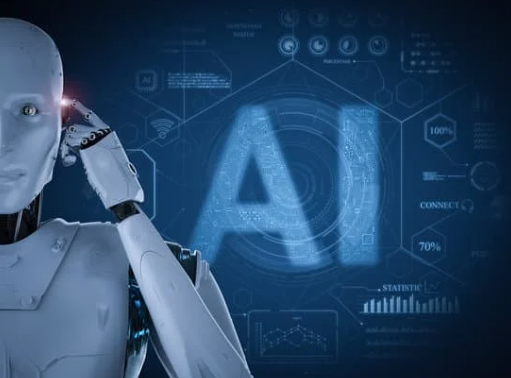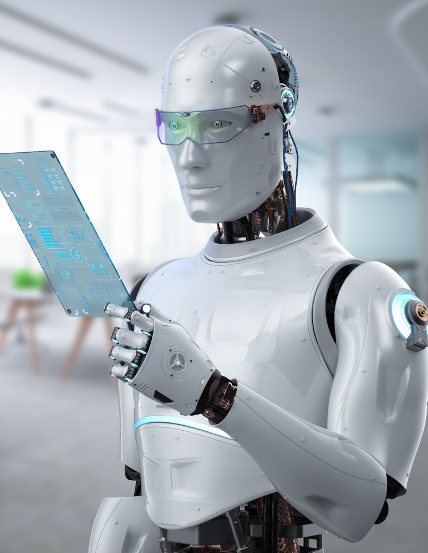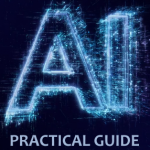
How can you explain what artificial intelligence is?
Artificial intelligence (AI) is the development of computer systems that can do tasks that would normally require human understanding. Some of these duties are to learn, think, solve problems, see, and understand natural language. AI systems can be put into two main groups:
Expert systems, which are sometimes called “weak AI” or “narrow AI,” are made to do a single job or a group of related jobs, like translating languages or recognizing pictures. Most of the time, we use narrow AI, like Siri or Google Assistant, in our daily lives.
Machine Learning Systems, which are sometimes called general AI or strong AI, are as smart as humans at a wide range of tasks. Creating general artificial intelligence is still just an idea at this point. With the start of ChatGPT, however, the theoretical seems to be getting closer and closer to being real.
Fields in AI
To build a strong basis in AI, you need to understand some of the basic ideas and subfields.
Machine learning (ML) is a type of artificial intelligence that involves teaching computers to find patterns and draw conclusions from them. There are three ways to use ML: supervised learning, uncontrolled learning, and reinforcement learning.
Deep learning is a type of machine learning in which neural networks are used to mimic the way the human brain works in order to spot complex patterns. Deep learning can be used for things like understanding natural language, making cars drive themselves, and recognizing pictures and sounds.
NLP is a branch of artificial intelligence that teaches computers how to understand and make sense of human words. NLP methods are used in things like robots, figuring out how someone feels, and translating text automatically.
Computer vision is a part of artificial intelligence that teaches computers how to understand and make sense of visual information from the outside world. Object recognition, picture segmentation, and face recognition are all uses of computer vision.
Robotics is a field that combines artificial intelligence (AI) with mechanical engineering to make smart machines that can talk to the real world. Robots are used in manufacturing, healthcare, gardening, and other fields.

How to Begin with AI
Now that you have a good grasp of the basic ideas, you can use a range of sources to learn more about AI:
Online Courses: Websites like Coursera, Udacity, and edX offer a range of AI classes for beginners, from simple lessons to more in-depth programs.
A few well-known AI books for newbies are “Artificial Intelligence: A Guide for Thinking Humans” by Melanie Mitchell, “Life 3.0: Being Human in the Age of Artificial Intelligence” by Max Tegmark, and “Superintelligence: Paths, Dangers, Strategies” by Nick Bostrom.
Subscribing to good AI blogs and YouTube channels will give you lessons, news, and ideas. Popular choices include the Google AI Blog, OpenAI, and Two Minute Papers.
Listen to podcasts about AI like “Artificial Intelligence with Lex Fridman” or “The Ed Mylett Show” to keep up with the latest developments and learn from experts in the field.
Networking: Go to workshops, join AI-related groups, and talk to other fans to learn from their experiences and stay motivated
AI Basics – Starters Guide to AI
AI Fundamentals: How to Understand the Basics of Artificial Intelligence
AI basics are important for anyone who is interested in the tech world. Artificial intelligence (AI) is an area that is changing how we live, work, and interact. It is also changing how fast it changes. In this complete guide, we’ll look at the basic ideas behind AI, how it’s used, and how it’s changing different businesses. If you know the basics of artificial intelligence (AI), you’ll be better able to use its benefits and stay ahead in today’s competitive world.
What is AI?
AI stands for “artificial intelligence,” which is the process of making computers that can do things that would normally require human intelligence. Some of these jobs are learning, solving problems, understanding natural language, noticing patterns, and even being creative.
AI comes in many different forms
When talking about AI Basics, it’s important to know the different kinds of AI, which can be roughly put into three groups:
Narrow AI refers to AI systems like chatbots, recommendation engines, and image recognition systems that are built to do specific tasks.
General AI: Artificial intelligence systems that can learn and do any intellectual job a human can do. Even though this type of AI is still just a theory, experts are working hard to make it a reality.
AI systems that are smarter than humans and can do almost any cognitive job better than humans are said to be “super intelligent.” This level of AI is also just a theory, and experts are still talking about it.
AI Basics: How Artificial Intelligence is Used
Understanding the basics of AI also means looking at how AI is used in different industry applications. Here are some of the most important uses:
- AI is used in healthcare to do diagnostics, adjust medicine, find new drugs, and keep an eye on patients. This helps patients and lowers the cost of healthcare.
- Finance: AI is used to find fraud, assess risk, do algorithmic trading, and help customers. This makes the financial industry more secure and efficient.
- Automation, predictive maintenance, and quality control that are driven by AI help improve production processes and cut down on downtime.
- AI is used in retail to handle inventory, do personalized marketing, and help with customer service. This leads to more sales and a better customer experience.
- Transportation: AI makes it possible for cars to drive themselves, handle traffic, and find the best routes. This makes transportation systems safer and more efficient.
Basics of AI: Ethical Issues and Challenges
As we learn more about AI Basics, it’s important to talk about the social issues and problems that come with making and using AI:
Privacy and data security: AI systems use a lot of data, which raises questions about the privacy and security of data. To protect users’ privacy, it is important to make sure that data is handled properly and stored safely.
Algorithmic bias: AI systems can pick up biases from the data they were trained on, which can lead to unfair and unfairly biased results. To avoid these kinds of problems, it’s important to use different and appropriate data when training models.
AI has the ability to automate a lot of jobs, which could put some workers out of work. It’s important to invest in retraining workers and look into new job possibilities made possible by AI.
Transparency and accountability: To build trust in AI apps, it’s important to make sure that AI decision-making processes are clear and that developers are held responsible for the results of their AI systems.
Engineering Done Quickly
In the past few years, AI has changed a lot, and quick engineering has become an important skill for improving AI models. This detailed guide will help people who are new to the field understand the basics of rapid engineering for beginners and how to use it to make AI solutions that are more useful.
What is prompt engineering?
By making and improving questions, you can help AI models like ChatGPT come up with more accurate, useful, and relevant answers. By making well-structured prompts, you can make your AI model work better and get better results with less data.
When you start doing rapid engineering, it’s important to know a few basic ideas that will guide your work. These things are:
Clarity: Make sure your directions are clear, short, and easy to follow.
Make sure your questions are clear and to the point so that people don’t answer in ways that aren’t clear or are off topic.
Give the AI model enough information so that it can come up with correct and useful answers.
How AI Works: Future Trends and Expectations
As we wrap up our look at the basics of AI, let’s take a look at some future trends and what the future holds for AI:
Getting bigger: The market for AI is expected to keep growing by leaps and bounds as more businesses adopt AI technologies and put money into research and development.
AI democratization: As AI tools and platforms become easier for non-experts to use, more people will be able to use AI powers, which will lead to more innovation and adoption.
Collaborative AI: A big area of focus will be the development of AI systems that can work with people, adding to their skills and making them stronger.
AI regulations: As AI becomes more common, we can expect more attention and the creation of rules to make sure that it is developed and used in an ethical way.
Final Thoughts
By learning about AI’s basic ideas, social concerns, and possible future uses, we can make better decisions about how to use this powerful technology. As AI continues to change quickly, it will be important to keep up with the latest changes if we want to get all the benefits and avoid any problems that may come up. In the end, though, we can get a better idea of how to use AI in the future if we look at both sides of this complicated problem.
Always remember that the best way to learn AI is to be patient, persistent, and curious. As you go along, you’ll learn new things and get better at things you already know how to do. Explore more, and have fun doing it!
Anyone who wants to use the power of artificial intelligence in their personal or business life needs to know the basics of AI. By learning more about how AI works, what it can be used for, and what ethical issues it raises, we can better understand its promise and how it will change our lives. With AI continuing to grow and be used in more and more fields, it’s important to stay up-to-date and adapt to its constantly changing world.
